To evaluate the quality of anything, one first has to understand its purpose. How can a person judge whether something is working if they don’t know what that thing meant to accomplish?
With this in mind, what is the purpose of physical education (PE)?
Is it simply to get kids playing sports? To improve their physical fitness? The true potential of PE is so much more than playing sports once a week in a gym class.
The goal of physical education should be to equip and empower students to stay active and healthy throughout their lives.
Stewardship of the physical self is a part of whole-person development.
Considering the increasingly sedentary lifestyles that the modern world leads to, regular, intentional movement is crucial to the health and wellbeing of the next generations. An accessible, skill-based physical education program can meet young people where they are and keep them on track.
PE can set the stage for a healthier and fuller life.
Why Movement Matters
Let’s start with the basics. Physical activity is linked to a long list of positive outcomes:
- Improved cardiovascular health
- Stronger bones and muscles
- Healthy weight management
- Better mental health
- Enhanced concentration and academic performance
According to leading child development and health experts, children and teens should get at least 60 minutes of moderate-to-vigorous physical activity per day.
Reimagining PE for Today’s Young People
PE, or “gym class,” as many of us remember it, used to center almost entirely around team sports. The year was broken into units: basketball, volleyball, soccer and maybe a dash of track and field. Once a week, you’d learn the rules, do a few drills, pick teams and then play with classmates. After a couple weeks there was a new sport. Your grade might depend on how fast you ran a mile or how many pushups you could do. Sporty kids thrived in gym class. The unathletic suffered through it. Most kids fell somewhere in the middle of that spectrum.
But what happened after students left high school? How many continued participating in regular movement? Experts recommend that adults do at least 150 minutes of moderate-intensity activity or 75 minutes of vigorous-intensity activity each week. In 2020, only about 20% of adults and teens got enough exercise to maintain good health. Recent data reveal that in 2022, nearly one-third of adults globally—around 1.8 billion people—failed to meet the recommended levels of physical activity. These are troubling numbers.
Sedentary lifestyles can lead to:
- Heart disease
- Obesity
- Type 2 diabetes
- High blood pressure
- Poor mental health (e.g., anxiety, depression)
- Certain cancers (such as colon, breast and endometrial)
- Weakened muscles and bones
- Poor posture and back problems
- Increased risk of premature death
Simply put, a sedentary lifestyle decreases the overall quality of a person’s life.
Often, young people don’t have the tools, access to resources and/or confidence to participate in fitness activities. That’s where PE comes in. It can and should be a place to build lifelong movement habits. With high-quality PE, we can nip sedentary lifestyles in the bud.
To effectively support the next generation, PE needs to be more than organized games and fitness testing. It needs to focus on developing skills and removing barriers to participation. These two pillars—skill development and accessibility—can shape the future of physical education by giving young people the tools to take control of their fitness.
The Power of Skills
In this context, a skill isn’t just the ability to score a goal or hit a ball—it’s the underlying competency that supports broader movement-based activities. It’s how you grip a pickleball paddle, how you balance during a yoga pose, how you coordinate your steps for a dance routine or how you breathe through a plank.
Skills make fitness activities both doable and enjoyable. When students develop skills, they’re more likely to stay engaged in physical activity over time.
With foundational skills, students are more confident, more motivated and better equipped to participate safely. Without them, even the idea of joining a game or workout can feel intimidating.
It’s also important to recognize that knowledge does not equal skill. A student might understand the rules of a soccer match or know what a push-up looks like, but that doesn’t mean they can do it, at least not effectively or without risking injury.
Skills require practice, feedback and time. Just like a surgeon learns both theory and technique, students in PE benefit from both understanding what to do and developing the ability to actually do it.
Skills Build Lifelong Confidence
The confidence that comes from learning physical skills goes beyond the gym. When students learn how to jump, throw, catch, balance and stretch, they build physical literacy.
Physical literacy is what gives them the tools to explore movement on their own terms: to join a pickup basketball game, go on a hike, try a dance class or stick to a personal fitness routine as they grow older.
Skills serve as a foundation for a lifelong active lifestyle. They turn physical activity into something enjoyable and sustainable, not something to dread or avoid.
An added bonus is that while this confidence is beneficial to regular physical activity, it also improves one’s life overall by enhancing mental health, boosting career and academic success, increasing resilience, enabling more fulfilling choices, and strengthening relationships.
The Importance of Accessibility and Student Choice
We’ve covered the value of skill-building. For skill-building to land, PE also needs to be accessible and welcoming. A one-size-fits-all approach doesn’t cut it. Student populations are diverse in learning styles, physical abilities and interest areas. Their access to resources is also wide-ranging.
To do right by the next generation, PE curricula must meet students where they are. That means it must:
- Offer differentiated instruction for diverse learners
- Provide engaging and dynamic learning content in multiple languages
- Contain a wide selection of fitness and sport topics for all interest areas and needs
- Integrate character development and social skills practice alongside physical education
- Use technology to support independent learning and reflection.
Most importantly, PE should feel welcoming to all students, not just the “athletic” ones.
As schools seek to equip the next generation with the habits and tools for lifelong health and wellness, let’s champion a thoughtful, flexible and accessible approach to PE. One that sees PE not as a period in the schedule but as a foundation for success in the classroom, in relationships and in life.
Paul Suhr is the co-founder and chief product officer of Hiveclass, a digital platform reimagining physical education for today’s youth, www.hiveclass.co.











